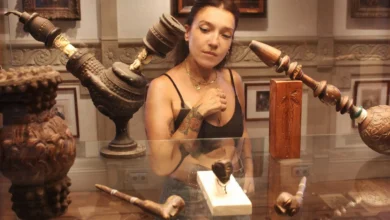Finding the Best Saddle: A Rider’s Dream Come True
Riding is a harmonious blend of human and equine artistry, where the partnership between rider and horse reaches its zenith. At the heart of this partnership is the saddle, a piece of equipment that connects the two worlds, ensuring comfort, balance, and communication. Every rider dreams of finding the perfect saddle that complements their riding style and their horse’s conformation. In this 1500-word guide, we will embark on the quest to find a journey that is, for every rider, a dream come true.
nnnnThe Saddle’s Role: More Than Meets the Eye
nnnnBefore we delve into the pursuit of the best saddle, it’s essential to understand the multifaceted role this piece of equipment plays in the rider’s world. The saddle goes beyond being a mere seat; it’s a bridge between two beings, the rider and the horse.
nnnn1. Comfort and Support
nnnnThe saddle’s primary function is to provide comfort to the rider. A comfortable rider is a more effective and secure rider. Proper padding, design, and fit are all integral to ensuring a comfortable ride.
nnnn2. Balance and Stability
nnnnA well-fitted saddle aids in maintaining the rider’s balance and stability in the saddle. Whether you’re navigating tricky jumps in an arena or spending long hours on the trail, balance is key.
nnnn3. Communication
nnnnThe saddle acts as a conduit for communication between rider and horse. The subtle cues you give your horse are transmitted through the saddle. A well-designed saddle enhances this communication.
nnnn4. Horse Comfort
nnnnEqually important is the horse’s comfort. A saddle that doesn’t fit correctly can lead to discomfort, muscle soreness, and even long-term health issues. A happy and comfortable horse performs better.
nnnnUnderstanding Your Riding Style
nnnnThe quest for the perfect saddle begins with understanding your riding style. Are you an English rider who loves the elegance of dressage, or do you prefer the ruggedness of Western riding? Are you into eventing, show jumping, or trail riding? Different riding styles have specific saddle requirements.
nnnnEnglish Saddles
nnnnDressage Saddles: Designed for dressage, these saddles emphasize rider position, balance, and close contact with the horse.
nnnnJumping Saddles: Perfect for show jumping, these saddles have a forward flap to accommodate shorter stirrups for jumping.
nnnnAll-Purpose Saddles: Versatile and suitable for various English riding disciplines.
nnnnWestern Saddles
nnnnTrail Saddles: Tailored for long hours in the saddle during trail riding, providing comfort and rider stability.
nnnnRoping Saddles: Designed for roping cattle, with a prominent horn for lassoing.
nnnnReining Saddles: Focused on precision and control for reining competitions.
nnnnSaddle Fit: The Crux of the Matter
nnnnSaddle fit is the linchpin of this quest. An ill-fitting saddle can cause a litany of problems for both rider and horse, from discomfort and soreness to long-term health issues.
nnnnRider Fit
nnnnRiders come in all shapes and sizes, and saddle fit is just as important for them as it is for the horse. Consider the following aspects:
nnnn- n
- Seat Size: The saddle should fit the rider comfortably, allowing for a secure seat without being too snug or too roomy. nnnn
- Seat Depth: Riders may prefer a deep seat for added security or a flatter seat for a more balanced position. nnnn
- Flap Length: The flap should accommodate the length of your legs, with your knees and thighs sitting comfortably on the saddle. nnnn
- Stirrup Length: Adjust the stirrups to ensure your legs hang naturally and your heels are below your hips. n
Horse Fit
nnnnThe horse’s comfort and conformation are equally important. A well-fitted saddle should:
nnnn- n
- Distribute Weight Evenly: Ensure the saddle distributes the rider’s weight evenly across the horse’s back. nnnn
- Clear the Withers: The saddle should clear the horse’s withers without causing pressure points. nnnn
- Match the Horse’s Build: Different breeds and individual horses have unique conformations. The saddle should complement your horse’s build. n
Seeking Professional Guidance
nnnnFinding often requires professional guidance. Saddle fitters are experts at assessing both rider and horse, ensuring a perfect fit. Don’t hesitate to seek their help.
nnnnSaddle Fitting Process
nnnn- n
- Assessment: The saddle fitter will assess your horse’s conformation and your riding style. nnnn
- Measurement: Precise measurements will be taken to determine the right saddle size and fit. nnnn
- Recommendations: Based on the assessment and measurements, the saddle fitter will recommend specific saddles for you to try. n
Trial Saddles
nnnnMany tack shops and saddle dealers offer trial saddles, allowing you to test a saddle before committing to a purchase. Take advantage of this opportunity to ensure the saddle truly suits your needs.
nnnnNew or Used: The Great Debate
nnnnAnother dilemma in the quest is whether to buy a new or used one. Each option has its advantages.
nnnnNew Saddles
nnnn- n
- Warranty: New saddles often come with warranties, ensuring you can return or exchange the saddle if it doesn’t work out. nnnn
- Customization: New saddles can be customized to your exact specifications, from the seat size to the leather type and color. nnnn
- Longevity: New saddles have a longer life ahead of them, ensuring you’ll get many years of use. n
Used Saddles
nnnn- n
- Cost: Used saddles are often more budget-friendly, allowing you to get a high-quality saddle at a lower price. nnnn
- Already Broken In: Used saddles are often more comfortable for the rider and the horse because they’ve already been broken in. nnnn
- Vintage Appeal: Some riders appreciate the aesthetic and historical value of vintage or used saddles. n
Saddle Maintenance and Care
nnnnOnce you’ve found it, proper care and maintenance are key to ensuring its longevity and performance.
nnnn- n
- Cleaning: Regularly clean your saddle to remove dirt, sweat, and grime. Use appropriate leather cleaners and conditioners to keep the leather supple. nnnn
- Storage: Store your saddle in a cool, dry place to prevent mold and mildew. Use a saddle cover to protect it from dust and sunlight. nnnn
- Frequent Inspections: Regularly inspect your saddle for wear and tear, including stitching, billets, and tree integrity. nnnn
- Professional Maintenance: Periodically, have your saddle professionally inspected and maintained, especially if you notice any issues. n
Conclusion
nnnnThe quest for the best saddle is a rider’s dream come true, a journey filled with discovery and partnership. It’s not just about the saddle; it’s about understanding your riding style, your horse’s needs, and your own comfort and balance. Seek professional guidance, consider new or used options, and take meticulous care of your saddle to ensure it continues to be a dream come true with every ride.
nnnnFinding the perfect saddle is a testament to your commitment to the art of riding, a commitment that reflects your respect and care for both your equine partner and the time-honored tradition of equestrian excellence. So, saddle up, and may your quest for the best be a journey filled with exhilarating rides and unforgettable moments.
n


